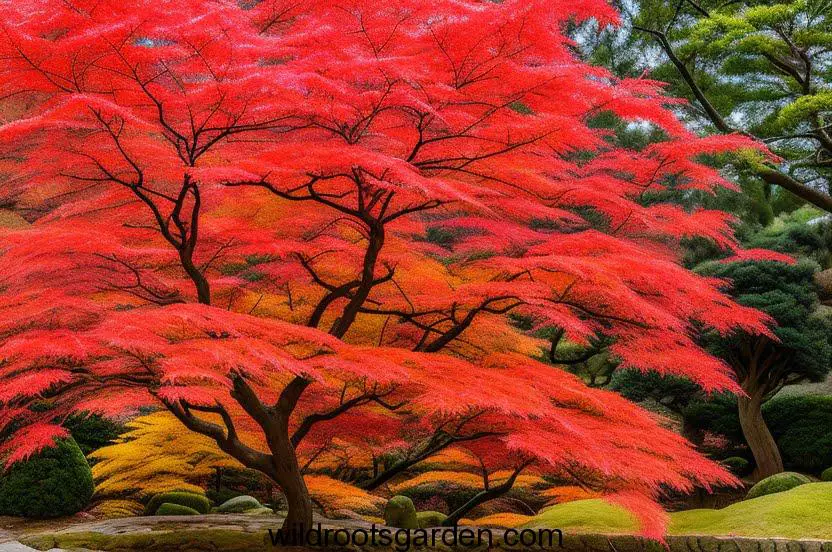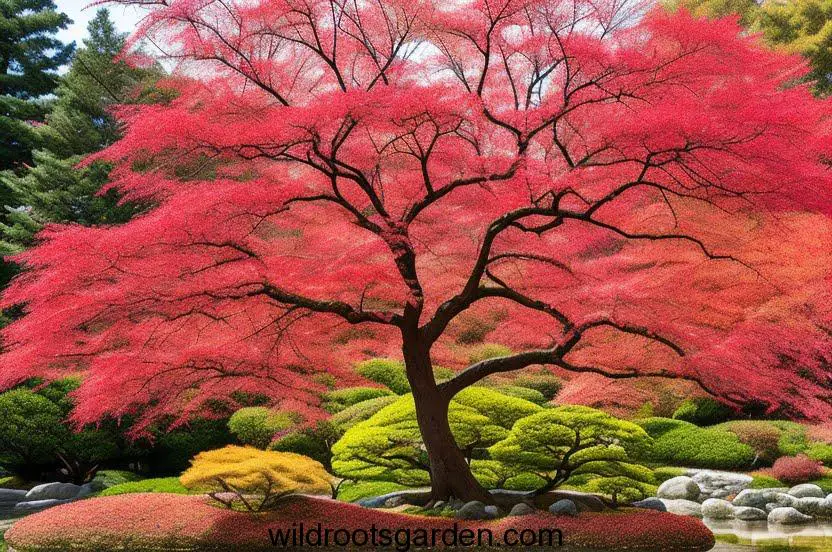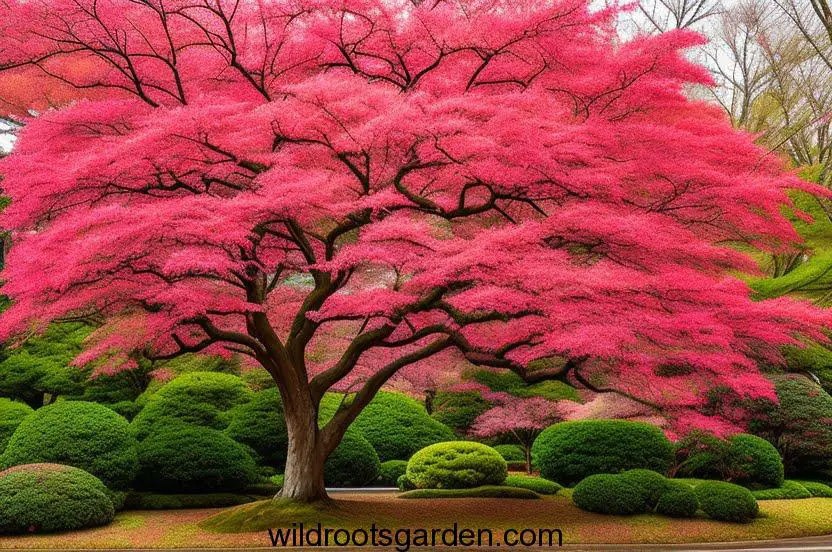Can I Transplant a Japanese Maple in the Spring? Welcome to a graceful and lovely horticulture trip! This site is your go-to resource if you’ve ever wondered how to transplant a Japanese maple in the spring. Join us as we maneuver this complex process to ensure that your favorite tree flourishes in its new home.
Find the ideal time for the transplant when the land is warmly embraced by the sun and fresh growth beckons. See how to prepare the soil and provide the perfect amount of shadow to protect your Japanese maple from the sun’s damaging rays.
We’ll provide professional advice on how to undertake transplanting with the utmost care, protecting the priceless root system and promoting a smooth transfer. Master the skill of caring for your tree, making sure it has plenty of water and is being watched over carefully so it will thrive in its new home.
This site promises to enthrall you with the timeless attraction of the Japanese maple and the gratifying art of transplanting it to a flourishing new home, whether you’re an experienced gardener or a passionate green thumb. Make your spring garden a true masterpiece by embracing the beauty of nature’s wonders!

JUMP TO TOPIC
Understanding Japanese Maple Trees
Native to Japan, Japanese maple trees, or Acer palmatum as it is scientifically known, are prized for their delicate and intricate leaf shapes, vibrant colors, and appealing branching patterns. These trees come in a variety of sizes, with some growing up to 20 to 30 feet tall and others remaining little and only a few feet tall. In temperate climes, they flourish and are widely prized for their decorative appeal.
It’s crucial to comprehend the special traits of a Japanese Maple tree before determining whether to transplant one. Instead of developing deep roots, these trees have a shallow root system that spreads laterally. They also prefer moist, well-draining soil and some shade. A Japanese Maple tree must be carefully planned and planted in order for the move to be effective.
Transplanting Japanese Maple Trees
- Best time to transplant: Japanese Maple trees can be transplanted throughout the year, but the ideal time is during the tree’s dormant period. This is typically in late winter or early spring before new growth begins.
- Preparing the tree for transplant: Start by pruning any dead or damaged branches to reduce stress on the tree during the transplanting process. It’s also beneficial to water the tree thoroughly a few days before the planned transplant to ensure it’s well-hydrated.
- Choosing the new planting location: Select a suitable location that provides partial shade and offers well-draining soil. Avoid areas with excessive sun exposure or strong winds, as these can cause stress to the transplanted tree.

Transplanting Process
Step-by-step guide for transplanting:
- Dig a wide and shallow hole around the tree, carefully exposing the roots without damaging them.
- Gently lift the tree out of the hole, ensuring the root ball remains intact.
- Transfer the tree to its new location, placing it in a prepared hole of appropriate size.
- Backfill the hole with soil, firmly but gently pressing it down to eliminate air pockets.
- Water the tree thoroughly after transplanting to settle the soil and provide hydration.
Proper handling and care during the process: It’s important to avoid stressing the Japanese Maple tree’s limbs or root structure when handling it. Rather than pulling or tugging at the limbs, carry the tree from the root ball. During and after the transplanting operation, make sure to provide enough water and shelter from harsh weather.
Caring for Transplanted Japanese Maple Trees
Watering and mulching techniques: Japanese maple trees that have recently been moved need to have their roots regularly watered. Allow the soil to dry up between watering sessions and apply deep but sparingly. Around the tree’s base, spread a layer of organic mulch to help retain moisture and control the soil’s temperature.

Pruning and fertilization guidelines: During the first year following transplanting, only prune dead or diseased branches. To prevent undue stress, avoid thorough pruning. Follow the manufacturer’s recommendations when applying a balanced, slow-release fertilizer sparingly to the tree.
Common Transplanting Issues and Solutions
Leaf scorch and stress symptoms: Transplanted Japanese Maple trees may experience leaf scorch or stress symptoms due to the shock of relocation. Symptoms include wilting, browning, or dropping of leaves. To mitigate this, provide adequate shade, water, and protection from extreme weather conditions.
Troubleshooting common problems: If you encounter issues like root rot, pest infestation, or disease, it’s crucial to address them promptly. Consult a professional arborist or horticulturist for proper diagnosis and treatment recommendations.
Benefits of Spring Transplanting
Transplanting Japanese Maple trees during the spring season offers several advantages:
Optimal growth conditions: Spring provides a favorable environment for root establishment and new foliage growth due to moderate temperatures and increased moisture in the soil.
Reduced stress on the tree: Transplanting during dormancy minimizes the stress on the tree, as it has already shed its leaves and is prepared for the transition.

We hope that by the time we’ve finished our exploration of the realm of springtime Japanese maple transplantation, you’ve gained insightful knowledge about this delicate horticultural art. Your cherished tree will elegantly adapt to its new settings and charm your garden for years to come with the correct timing, planning, and care.
Do not forget to give your Japanese maple lots of love and care while admiring its development. Enjoy the satisfaction of seeing it thrive in its new home, enhancing your environment with its alluring foliage and graceful branches.
May the wonders of nature inspire your spring gardening attempts, and may your Japanese maple flourish as a living example of the fruitful process of transplantation. Good luck with your gardening and may your
FAQs
Q: Can I transplant a Japanese Maple during summer or fall?
A: While it is possible to transplant a Japanese Maple tree in the summer or the fall, it is typically advised to do so in late winter or early spring, when the tree is dormant. The tree will experience less stress and have a better chance of establishing itself if the transplant is done during the dormant season.
Q: How long does it take for a transplanted Japanese Maple to establish?
A: Depending on the size of the tree, the level of care given, and the growing environment, the establishment period for a transplanted Japanese Maple tree can vary. A transplanted tree will often take many months to a year to establish its root system and restart normal growth.
Q: Should I use root hormone during the transplanting process?
A: While the use of root hormone can potentially enhance root development, it is not necessary for transplanting Japanese Maple trees. These trees have a naturally robust root system, and if proper care is provided during the transplanting process, they can establish well without the need for additional hormones.
Q: Can I transplant a mature Japanese Maple tree?
A: Transplanting mature Japanese Maple trees can be challenging due to their size and established root systems. It’s recommended to consult a professional arborist who can assess the tree’s condition and provide guidance on the feasibility and best practices for transplanting a mature tree.
Q: Is it necessary to stake the tree after transplanting?
A: In most cases, staking a transplanted Japanese Maple tree is not necessary unless it is located in an area prone to strong winds or if the tree is particularly top-heavy. If staking is required, use flexible ties to secure the tree gently, allowing some movement to promote natural trunk strengthening. Regular monitoring is essential to ensure the ties are not overly constrictive and are adjusted as the tree grows.

